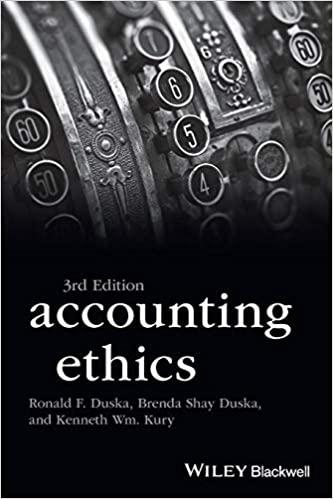Critical Thinking Case 2 Estate Taxes on Santiago's Estate Santiago Hernandez, was 65 when he retired in 2014. Maria, his wife of 40 years, passed away the next year. Her will left everything to Santiago. Although Maria's estate was valued at $2,250,000, there was no estate tax due because of the 100 percent marital deduction. Their only child, Samuel, is married to Luna They have four children, two in college and two in high school. In 2015, Santiago made a gift of Microsoft stock worth $260,000 jointly to Samuel and Luna, Because of the two $14,000 annual exclusions and the unified credit, no gift taxes were due. When Santiago died in 2018, his home was valued at $870,000, his vacation cabin was valued at $465,000, his investments in stocks and bonds were valued at $1,890,000, and his pension funds were worth $645,000 (Samuel was named beneficiary). Santiago also owned a life insurance policy that paid proceeds of $685,000 to Samuel. He left $60,000 to his church and $25,000 to his high school to start a scholarship fund in his wife's name. The rest of the estate was left to Samuel. Funeral costs were $13,000. Debts were $90,000 and miscellaneous expenses were $25,000. Attorney and accounting fees came to $38,000. Use Worksheet 15.1 to guide your estate tax calculations as you complete these exercises 1. Compute the value of Santiago's probate estate $ 2. Compute the value of Santiago's grous estate S 3. Determine the total allowable deductions. Enter your answer as a positive value 4. Calculate the estate tax base taking into account the gifts given to Samuel and Luna (remember that the annual exclusions "adjust the taxable gifts), 2. Compute the value of Santiago's gross estate. $ 3. Determine the total allowable deductions. Enter your answer as a positive value, $ 4. Calculate the estate tax base taking into account the gifts given to Samuel and Luna (remember that the annual exclusions adjust the taxable gifts)- $ 5. Use Exhibit 15.8 to determine the tentative tax on estate tax base. $ I 6. Subtract the appropriate unified tax credit (Exhibit 15.7) for 2018 from the tentative tax on estate tax base to arrive at the federal estate tax due $ 7. Comment on the estate shrinkage experienced by Santiago's estate. What might have been done to reduce this shrinkage? Explain. The input in the box below will not be graded, but may be reviewed and considered by your instructor PROTECTED VIEW Be carefulfiles from the Internet can contain viruses. L B3 A D E F G H u 1 COMPUTING FEDERAL ESTATE TAX DUE WN 3 Name Date 6 Line Computation Item Amount Total Amount 8 1 Gross estate S 2 Subtract sum of: (a) Funeral expenses S 10 I 12 (b) Administrative expenses 14 (c) Debts 16 (d) Other expenses 18 15 Total 3 Result Adjusted gross estate S 20 21 22 4 Subtract sum of: (a) Marital deduction 24 (b) Charitable deduction Total 5 Result Taxable estate $ 26 27 28 2 30 32 32 33 34 6 Add Adjusted taxable gifts (post-1976) S 7 Result Estate tax base S 8 S 9 S 36 37 Compute Tentative tax on estate tax base Subtract sum of: (a) Gift tax payable on post-1976 gifts (b) Unified tax credit Total 39 41 IS 43 10 Result Toral estate taxes 45 11 Subtract Other credits IS 47 12 Result Federal estate tax due S 48 49 Use Exhibit 15 to calculate the tentative tax 50 "Use Esiba 15.710 determine the approprime united credit "Note that the amount shown on line 7 is a significant number because most states use the same estate batean 51 used for the federal tax 52 53 54 EXHIBIT 15.8 Federal Unified Transfer Tax Rates $ This unified rate schedule defines the amount of federal gift and estate taxes that estates of various sizes would have to pay: it incorporates the rates passed in the American Taxpayer Relief Act of 2012, signed into law on January 2, 2013 Estates and gifts under the exclusion amount pay no federal tax. The estate exclusion amount increased annually from $2,000,000 in 2006 to $11,180,000 in 2018 (see Exhibit 15.6). From 2009 to 2018, the top tax rates decreased from 45 percent to 40 percent. TAXABLE ESTATE VALUE TENTATIVE TAX More Than But Not More Than Base Amount + Percent On Excess Over 0 $10,000 $ 0 10,000 20,000 1,800 20% $ 10,000 20,000 40,000 3,800 22 20,000 40,000 60,000 8,200 24 40,000 60,000 80,000 13,000 60,000 80,000 100,000 18,200 28 80,000 100,000 150,000 23,800 30 100,000 150,000 250,000 38,800 32 150,000 250,000 500,000 70,800 34 250,000 500,000 750,000 155,000 37 500,000 750,000 1,000,000 248,300 39 750,000 345,800 40 1,000,000 1,000,000 26 EXHIBIT 15.7 Unified Credits and Applicable Exclusion Amounts for Estates and Gifts On January 2, 2013, the American Taxpayer Relief Act of 2012 was signed into law. The major features of the Act were to make the estate tax rate 40 percent, to make the annual adjustment to the applicable exclusion amount permanent and to make the portability of the unified transfer tax credit permanent. The Tax Cut and Jobs Act of 2017 increased the applicable exclusion amount to $11,180,000. This table shows the recent history of the unified credits and applicable exclusion amounts. Applicable Applicable Unified Tax Exclusion Unified Tax Exclusion Year Credit-Estates Amount--Estates Credit-Gifts Amount-Gifts 2008 $780,800 $2,000,000 $345,800 $1,000,000 2009 $1,455,800 $3,500,000 $345,800 $1,000,000 2010 Estate tax repealed for 2010 $330,800 $1,000,000 2011 $1,730,800 $5,000,000 $1,730,800 $5,000,000 2012 $1,772,800 $5,120,000 $1,772,800 $5,120,000 2013 $2,045,800 $5,250,000 $2,045,800 $5,250,000 2014 $2,081,800 $5,340,000 $2,081,800 $5,340,000 $2,117,800 2015 $5,430,000 $2,117800 $5,430,000 $2,125,800 $5,340,000 $2,125,800 2016 $5,340,000 $2,141,800 $5,490,000 $2,141,800 2017 $5,490,000 $4,417,800 $11,180,000 $4,417800 2018 $11,180,000 Source: Internal Revenue Service











